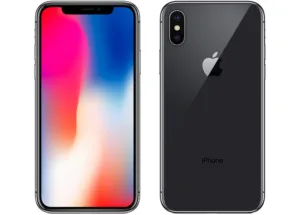Teardown engineers at IHS Markit have completed their preliminary physical dissection of the new Apple iPhone X and found that the model A1865 version of the smartphone with 64GB of NAND memory carries a bill of materials (BOM) of $370.25.
With a starting price of $999, the iPhone X is $50 more than the previous most expensive iPhone, the 8 Plus 256GB. As another point of comparison, Samsung’s Galaxy S8 with 64GB of NAND memory has a BOM of $302 and retails at around $720. Andrew Rassweiler, senior director of cost benchmarking services at IHS Markit, said:
“The iPhone X is the most expensive iPhone ever made, and it has the highest retail price tag of comparable flagship phones, catapulting the smartphone industry to an entirely new price point.
While the iPhone X represents Apple’s biggest step forward in design since the iPhone’s debut in 2007, its underlying architecture is analogous to the iPhone 8 Plus. Both models share platform-common components, but the X’s superior screen and TrueDepth sensing set the phone apart and contribute to its higher cost”.
Apple’s retail strategy
The iPhone X represents the next decade of iPhone design as much as it celebrates the 10th anniversary of the release of the original iPhone by Apple founder Steve Jobs. The pricing strategy for the iPhone X is also unique, providing plenty of daylight between its starting price and that of the most expensive iPhone 8 Plus model SKU. Wayne Lam, principal analyst for mobile devices and networks at IHS Markit, commented:
“Typically, Apple utilises a staggered pricing strategy between various models to give consumers a tradeoff between larger and smaller displays and standard and high-density storage. With the iPhone X, however, Apple appears to have set an aspirational starting price that suggests its flagship is intended for an even more premium class of smartphones.”
Based on the BOM cost and retail pricing, IHS Markit believes that Apple is maintaining its typical hardware margins for the iPhone X. That gross margin may increase over time as manufacturing yields improve.
TrueDepth sensing: lots of components, many suppliers
The standout feature on the iPhone X is Face ID, a facial recognition system that takes the place of Touch ID for unlocking the phone and authenticating payments. It also makes possible new capabilities such as studio-quality lighting in portrait mode and augmented reality experiences in games and apps.
Face ID is enabled by the TrueDepth sensing system, which is housed in the black “notch” at the top of the phone. An infrared camera projects and analyses more than 30,000 invisible dots to create a precise depth map of a human face, and it employs machine learning to adapt to physical changes in appearance. Jérémie Bouchaud, senior director for MEMS and sensors at IHS Markit, stated:
“Apple’s Face ID system is very similar in basic functionality to the old Microsoft Kinect system of sensing, which used a flood illuminator, dot projector and infrared camera. It’s a complex assembly that uses components from many suppliers.”
The teardown of the iPhone X revealed that its IR camera is supplied by Sony/Foxconn while the silicon is provided by ST Microelectronics. The flood illuminator is an IR emitter from Texas Instruments that’s assembled on top of an application-specific integrated circuit (ASIC) and single-photon avalanche diode (SPAD) detector from ST Microelectronics. Finisar and Philips manufacture the dot projector. IHS Markit puts the rollup BOM cost for the TrueDepth sensor cluster at $16.70. Bouchaud continues:
“The assembly and testing of the TrueDepth system and its individual components is challenging and likely a factor in the production delays. For instance, the assemblage and test of the Texas Instruments and ST Microelectronics subsystem for the flood illuminator is far from trivial and requires a high number of test equipment pieces”.
Finally, the iPhone gets an edge-to-edge AMOLED display
For the iPhone X, Apple utilises a 5.85″ 19.5:9 aspect ratio AMOLED panel with a Force Touch sensor beneath the polariser film. The aspect ratio is the longest of any phone on the market today—a design decision Apple likely made to accommodate the notch while providing a viewable area akin to 18.5:9 aspect ratio smartphones.
Sporting a 2436 x 1125 resolution, the “Super Retina” display features the highest pixel density (458 pixels per inch) and contrast ratio (1,000,000:1) ever in an iPhone. The panel is supplied by Samsung Display, and according to the IHS Markit AMOLED and Flexible Display Intelligence Service, the panel maker will supply around 67 million flexible AMOLED units to Apple in 2017, built to the company’s unique specifications.
Popular in bezel-less, premium smartphone designs, full screens like the one used in the X are thin and light and have high screen-to-body ratios. David Hsieh, senior director for displays at IHS Markit, said:
“Both the Galaxy S8/S8 Plus and iPhone X are nearly bezel-less and have a greater than 80% screen-to-body ratio. Full-screen smartphone displays are rapidly becoming mainstream.
Apple’s use of AMOLED in its flagship smartphone is expected to evolve in the coming years—first by the removal of the notch in the display, and then to a smartphone/tablet combo form factor”.
IHS Markit estimates the cost of the display module, which includes the cover glass, AMOLED panel and Force Touch sensor, at $110.
iPhone X: charting Apple’s path for the next decade
At Apple’s fourth-quarter earnings call on November 2nd 2017, Apple CEO Tim Cook revealed that the company recorded its biggest year ever. With its innovative, new technologies, the iPhone X embodies Apple’s vision of the future. Principal analyst Wayne Lam concludes:
“There’s a lot of content and advanced technology wrapped up in the iPhone X, and Apple has priced its flagship according to the value it’s delivering. Apple is executing well on its strategy with a truly unique iPhone”.

